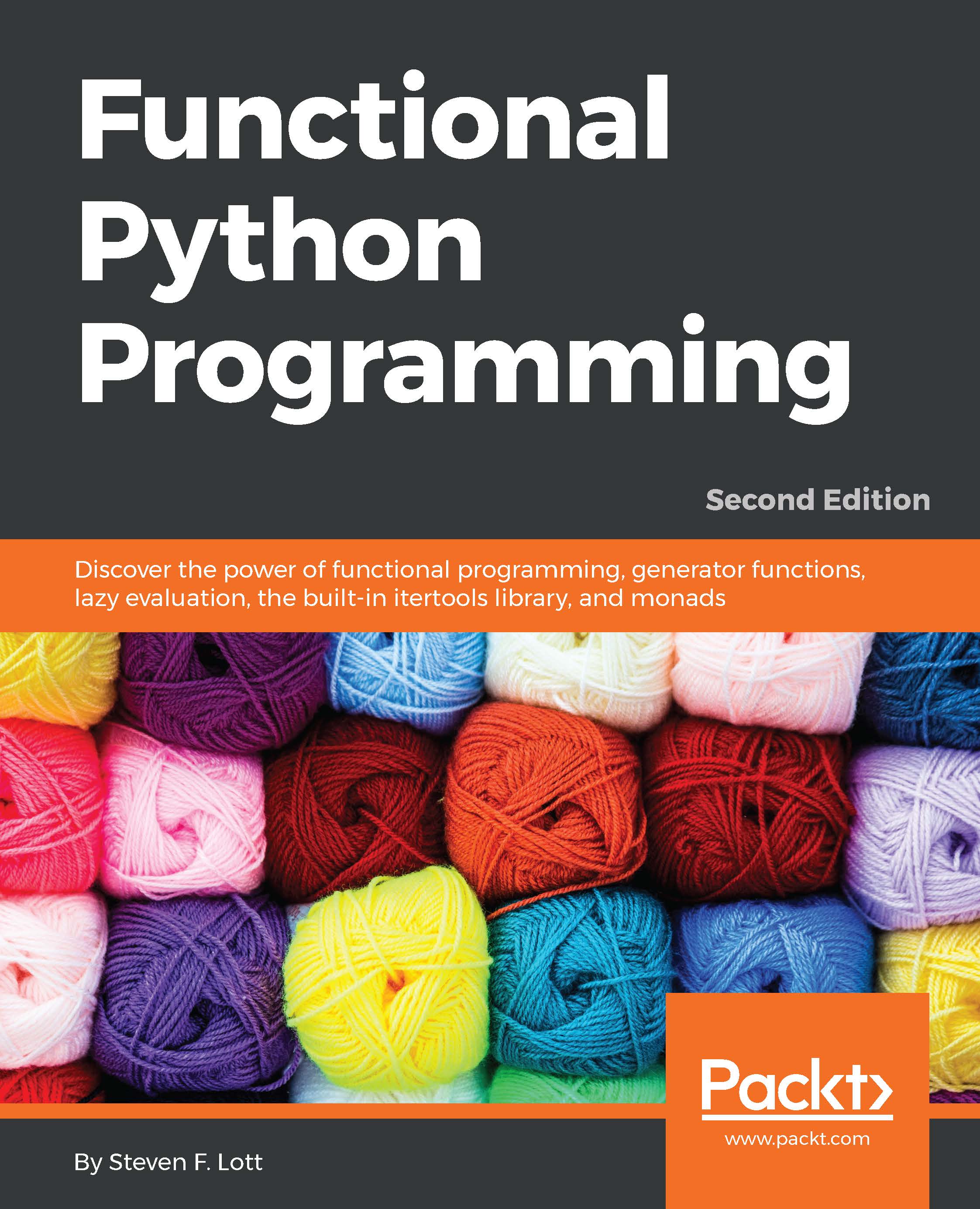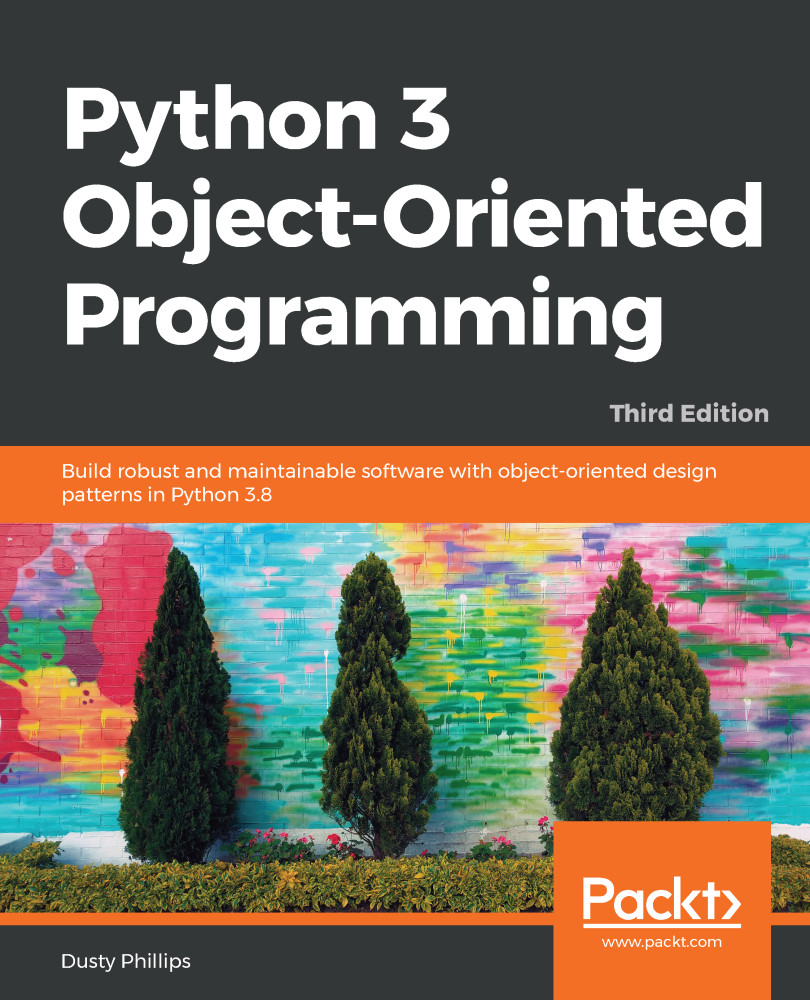As part of our introduction, we'll look at a classic example of functional programming. This is based on the paper Why Functional Programming Matters by John Hughes. The article appeared in a paper called Research Topics in Functional Programming, edited by D. Turner, published by Addison-Wesley in 1990.
Here's a link to the paper Research Topics in Functional Programming:
http://www.cs.kent.ac.uk/people/staff/dat/miranda/whyfp90.pdf
This discussion of functional programming in general is profound. There are several examples given in the paper. We'll look at just one: the Newton-Raphson algorithm for locating the roots of a function. In this case, the function is the square root.
It's important because many versions of this algorithm rely on the explicit state managed via loops. Indeed, the Hughes paper provides a snippet of the Fortran code that emphasizes stateful, imperative processing.
The backbone of this approximation is the calculation of the next approximation from the current approximation. The next_() function takes x, an approximation to the sqrt(n) method and calculates a next value that brackets the proper root. Take a look at the following example:
def next_(n, x):
return (x+n/x)/2
This function computes a series of values  . The distance between the values is halved each time, so they'll quickly converge on the value such that
. The distance between the values is halved each time, so they'll quickly converge on the value such that  , which means
, which means  . Note that the name next() would collide with a built-in function. Calling it next_() lets us follow the original presentation as closely as possible, using Pythonic names.
. Note that the name next() would collide with a built-in function. Calling it next_() lets us follow the original presentation as closely as possible, using Pythonic names.
Here's how the function looks when used in Command Prompt:
>>> n = 2
>>> f = lambda x: next_(n, x)
>>> a0 = 1.0
>>> [round(x,4) for x in (a0, f(a0), f(f(a0)), f(f(f(a0))),)]
[1.0, 1.5, 1.4167, 1.4142]
We've defined the f() method as a lambda that will converge on  . We started with 1.0 as the initial value for
. We started with 1.0 as the initial value for  . Then we evaluated a sequence of recursive evaluations:
. Then we evaluated a sequence of recursive evaluations:  ,
,  , and so on. We evaluated these functions using a generator expression so that we could round off each value. This makes the output easier to read and easier to use with doctest. The sequence appears to converge rapidly on
, and so on. We evaluated these functions using a generator expression so that we could round off each value. This makes the output easier to read and easier to use with doctest. The sequence appears to converge rapidly on  .
.
We can write a function, which will (in principle) generate an infinite sequence of  values converging on the proper square root:
values converging on the proper square root:
def repeat(f, a):
yield a
for v in repeat(f, f(a)):
yield v
This function will generate approximations using a function, f(), and an initial value, a. If we provide the next_() function defined earlier, we'll get a sequence of approximations to the square root of the n argument.
The repeat() function expects the f() function to have a single argument; however, our next_() function has two arguments. We can use a lambda object, lambda x: next_(n, x), to create a partial version of the next_() function with one of two variables bound.
The Python generator functions can't be trivially recursive; they must explicitly iterate over the recursive results, yielding them individually. Attempting to use a simple return repeat(f, f(a)) will end the iteration, returning a generator expression instead of yielding the sequence of values.
There are two ways to return all the values instead of returning a generator expression, which are as follows:
- We can write an explicit for loop as follows:
for x in some_iter: yield x.
- We can use the yieldfrom statement as follows:
yield from some_iter.
Both techniques of yielding the values of a recursive generator function are equivalent. We'll try to emphasize yield from. In some cases, however, the yield with a complex expression will be clearer than the equivalent mapping or generator expression.
Of course, we don't want the entire infinite sequence. It's essential to stop generating values when two values are so close to each other that either one is useful as the square root we're looking for. The common symbol for the value, which is close enough, is the Greek letter Epsilon, ε, which can be thought of as the largest error we will tolerate.
In Python, we have to be a little clever when taking items from an infinite sequence one at a time. It works out well to use a simple interface function that wraps a slightly more complex recursion. Take a look at the following code snippet:
def within(ε, iterable):
def head_tail(ε, a, iterable):
b = next(iterable)
if abs(a-b) <= ε: return b
return head_tail(ε, b, iterable)
return head_tail(ε, next(iterable), iterable)
We've defined an internal function, head_tail(), which accepts the tolerance, ε, an item from the iterable sequence, a, and the rest of the iterable sequence, iterable. The next item from the iterable is bound to a name b. If  , the two values are close enough together to find the square root. Otherwise, we use the b value in a recursive invocation of the head_tail() function to examine the next pair of values.
, the two values are close enough together to find the square root. Otherwise, we use the b value in a recursive invocation of the head_tail() function to examine the next pair of values.
Our within() function merely seeks to properly initialize the internal head_tail() function with the first value from the iterable parameter.
Some functional programming languages offer a technique that will put a value back into an iterable sequence. In Python, this might be a kind of unget() or previous() method that pushes a value back into the iterator. Python iterables don't offer this kind of rich functionality.
We can use the three functions next_(), repeat(), and within() to create a square root function, as follows:
def sqrt(a0, ε, n):
return within(ε, repeat(lambda x: next_(n,x), a0))
We've used the repeat() function to generate a (potentially) infinite sequence of values based on the next_(n,x) function. Our within() function will stop generating values in the sequence when it locates two values with a difference less than ε.
When we use this version of the sqrt() method, we need to provide an initial seed value, a0, and an ε value. An expression such as sqrt(1.0, .0001, 3) will start with an approximation of 1.0 and compute the value of  to within 0.0001. For most applications, the initial a0 value can be 1.0. However, the closer it is to the actual square root, the more rapidly this method converges.
to within 0.0001. For most applications, the initial a0 value can be 1.0. However, the closer it is to the actual square root, the more rapidly this method converges.
The original example of this approximation algorithm was shown in the Miranda language. It's easy to see that there are few profound differences between Miranda and Python. The biggest difference is Miranda's ability to construct cons, turning a value back into an iterable, doing a kind of unget. This parallelism between Miranda and Python gives us confidence that many kinds of functional programming can be easily done in Python.
 United States
United States
 Great Britain
Great Britain
 India
India
 Germany
Germany
 France
France
 Canada
Canada
 Russia
Russia
 Spain
Spain
 Brazil
Brazil
 Australia
Australia
 Singapore
Singapore
 Canary Islands
Canary Islands
 Hungary
Hungary
 Ukraine
Ukraine
 Luxembourg
Luxembourg
 Estonia
Estonia
 Lithuania
Lithuania
 South Korea
South Korea
 Turkey
Turkey
 Switzerland
Switzerland
 Colombia
Colombia
 Taiwan
Taiwan
 Chile
Chile
 Norway
Norway
 Ecuador
Ecuador
 Indonesia
Indonesia
 New Zealand
New Zealand
 Cyprus
Cyprus
 Denmark
Denmark
 Finland
Finland
 Poland
Poland
 Malta
Malta
 Czechia
Czechia
 Austria
Austria
 Sweden
Sweden
 Italy
Italy
 Egypt
Egypt
 Belgium
Belgium
 Portugal
Portugal
 Slovenia
Slovenia
 Ireland
Ireland
 Romania
Romania
 Greece
Greece
 Argentina
Argentina
 Netherlands
Netherlands
 Bulgaria
Bulgaria
 Latvia
Latvia
 South Africa
South Africa
 Malaysia
Malaysia
 Japan
Japan
 Slovakia
Slovakia
 Philippines
Philippines
 Mexico
Mexico
 Thailand
Thailand
















